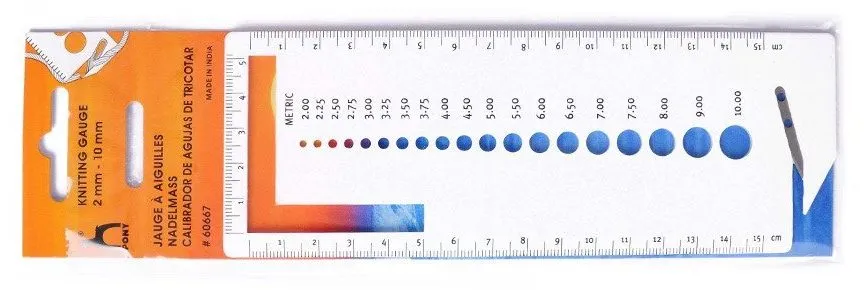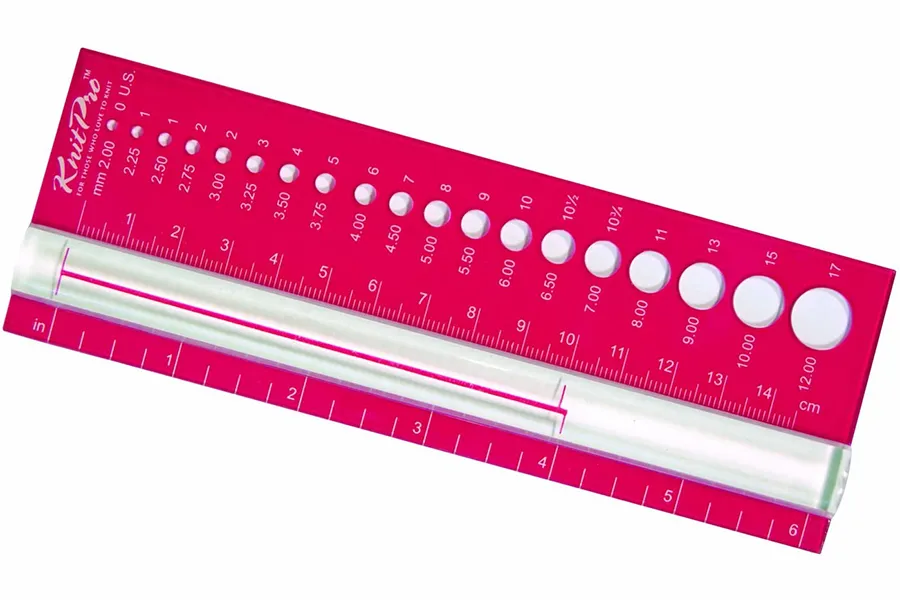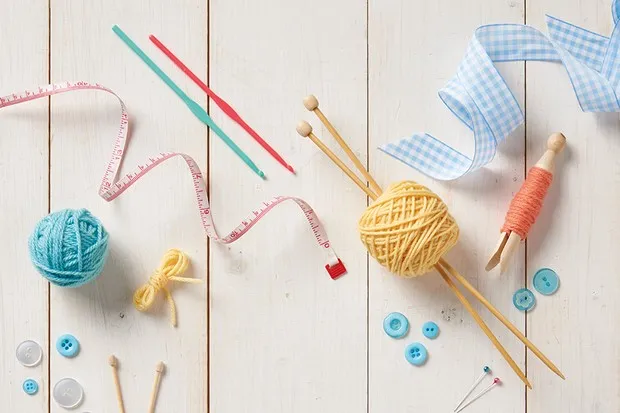Knitting needle sizes can be confusing, but don't worry – we're here to help you make sense of them.
Countries label their knitting needles in different ways, so the number on your needle may mean a different thing depending on where in the world you live.
In this article, we'll explain more about these numbers, show you how to measure knitting needle sizes, and provide a knitting needle conversion chart for the UK, metric and US sizes. In our guide you'll find:
- Knitting needle conversion chart printable
- What do knitting needle sizes mean?
- How to measure knitting needle size
- Knitting needle gauge: 3 to buy
- Knitting needle conversion chart
Knitting needle conversion chart printable
These are the most common needle sizes you'll see, but if you're in doubt about your needle size always check it using a needle gauge. Here's a handy conversion chart for you to save and print:

What do knitting needle sizes mean?
The size on a knitting needle tells you its diameter. This measurement is important because the needles you choose can have a huge impact on your finished project.
If you choose needles that are too big for your yarn, you'll end up with large, loopy stitches, and if you choose needles that are too small your stitches could be tight and hard to knit.
Take a look at our yarn weight conversion chart and beginner's guide for more on which needles are best for which yarns.
The knitting needle size may be written in a number of different ways, depending on where it was made. Many needles are labelled using metric units, but the UK and US also have their own numbering systems and, confusingly, they work in opposite directions.
In the UK, the scale runs from 14 (the smallest size) to 000 (the largest size), while in the US it runs from 0 (the smallest size) to 50 (the largest size). And for some common metric needle sizes there's no UK or US equivalent at all!
To get your head around all of this, you need a knitting needle conversion chart, like the one shown above.
How to measure knitting needle size
Most new needles have the size printed somewhere on the end or side of the needle, but what about those hand-me-down or charity shop pins where the number was rubbed off years ago, if it ever existed in the first place?
To determine the size of these mystery needles, you need a knitting needle gauge.
These handy tools are an essential part of any knitting starter kit, and many also offer other functions such as enabling you to measure knitting tension squares or even cut your yarn. They are made from sturdy wood, plastic or sometimes metal, and feature a collection of holes, from small to large, each with a number next to it.
All you need to do is push the point of your mystery needle through each hole in turn, until you find the one where it fits perfectly. Then read off the number next to the hole and this will tell you the knitting needle size – easy!
Knitting needle gauges: 2 to buy
Pony Knitting Gauge

We love how many tools Pony have crammed into this clever needle gauge! As well as measuring needle sizes from 2-10mm it also has a ruler, and a blade for cutting yarn. There's a separate version for measuring larger needle sizes too.
Buy it from Amazon
Knit Pro Needle View Sizer

This little gadget measures needles from 2-12mm, and also comes with a ruler in both centimetres and inches. There's a clear window in the ruler that enables you to measure your knitting gauge – handy when swatching for a new project.
Buy it from Amazon.
Making sure you choose the right knitting needle
Getting the correct needle size for your project is important, if the needle is too big your stitches will be loopy and if it's too small the stitches will be tight and hard to work with!
Bookmark this page so that you can check our conversion table before you start your next project!
How to read knitting patterns for beginners
If you're new to knitting, abbreviations in patterns can be a challenge. We have a quick reference guide to knitting abbreviations, which will help you quickly find out an unknown term.

